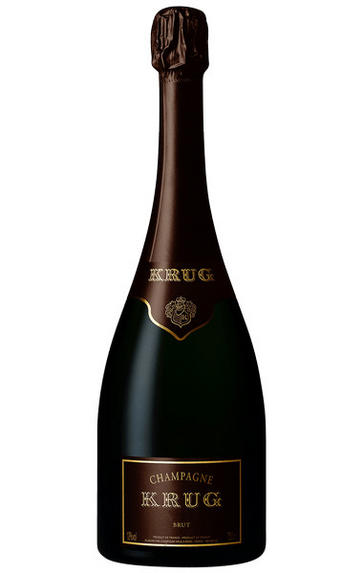
1996 Champagne Krug, Brut
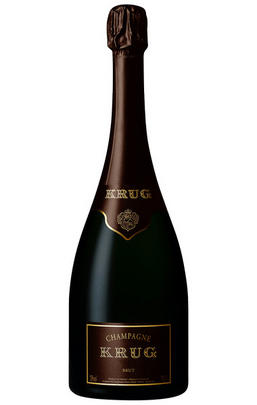
Critics reviews
The 1996 Vintage is magnificent. A towering, explosive Champagne, the 1996 delivers the house’s signature breadth in a full-bodied, structured Champagne with enough pure density and acidity to age well for decades.
Warm, nutty and spiced overtones add nuance on the finish. The 1996 is just beginning to enter the early part of its mature stage, where it is sure to remain for several decades. Krug’s Vintage is one of the truly epic wines of the year.
Antonio Galloni, Vinous.com (October 2014)
Light gold. Remarkably perfumed nose projects an exotic bouquet of deep, leesy yellow fruit, minerals, honeycomb, smoked meat and flowers, with Asian spices building expanding in the glass. Almost painfully concentrated, offering a surreal parade of orchard and pit fruits, smoked meat, toasted brioche and marrow braced by intensely salty, stunningly incisive minerality. Imagine a Frankenstein's monster of Chablis Le Clos and Clos Ste. Hune-but one with perfect balance, of course, you get an idea of what I found in my bottle.
The energetic, stony character builds exponentially on the finish, which didn't well, well, finish. The best analogy I can come up with for this Champagne's intensity, focus, and clarity is liquefied barbed wire. It is utterly hallucinatory and one of the most impressive wines I've ever been fortunate enough to drink. At the risk of sounding completely out of touch with reality, this is a value.
Josh Raynolds, Vinous.com (November 2007)
ID 407001. Disgorged autumn 2007. 48% Pinot Noir, 31% Chardonnay, 21% Pinot Meunier from 17 villages. Known as ‘extreme and charismatic’. Contrary to people’s belief, 1996 was not an easy vintage: dealing with this extreme freshness is always challenging. Harvest took place between 20 September and 30 September.
Tasted blind. Deep orangey apricot colour with a sluggish bead. Fully mature nose with notes of dried apricots and nuts. Wholly enveloping pleasure on the nose! There is a hint of caramel and also something very exotic indeed. Something you wouldn’t find in any other champagne, surely. Dry, clean finish.
Jancis Robinson MW, JancisRobinson.com (February 2018)
It has been a while since we met, but the Krug 1996 is unequivocally a brilliant slice of champagne – the nose cut from some slab of limestone that must have plummeted into the Champagne countryside from outer space.
The palate is rapier-like acidity, life-affirming mineralite and a focus and freshness that is nothing less than thrilling. Krug is one of life’s great pleasures, and this is one of their finest vintages.
Neil Martin, Wine Advocate (May 2013)
This is a handsome yellow-gold colour with hints of bronze. Still fresh and vigorous yet with a ripe acidity. Wow, this is something else in the mouth! There is a lot going on - firm and tight one moment, then a panoply of sensuous flavours. Williams pears and glace à l'orange evolve into lemon and prunes. A splendid finale of great length and vigour demonstrates that this '96 still has years of life ahead of it.
Drink 2017 - 2030
Michael Edwards, Decanter.com
About this WINE
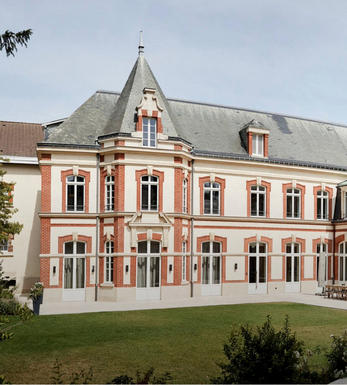
Krug
Krug was established in 1843 and has since specialised in producing only prestige and specialised champagnes. Krug is the only firm still producing all its champagne in small oak casks, an essential element for developing Krug's intense bouquet and complex flavours. Today, Henri, Rémi and Olivier Krug, who supervise every step of production, tasting and blending, represent the 5th and 6th generations.
With long periods of maturation (6-8 years), Krug champagne continues to age gracefully after release, developing an intensely rich, nutty flavour whilst remaining remarkably fresh.
Krug`s finest champagne is Clos du Mesnil, a 100%-Chardonnay based champagne that comes from a small walled vineyard at Le Mesnil-sur-Oger. It is one of the world`s greatest Blanc de Blanc champagnes.
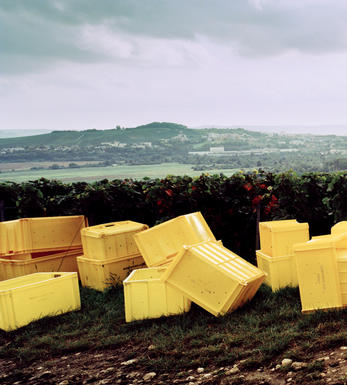
Brut Champagne
Brut denotes a dry style of Champagne (less than 15 grams per litre). Most Champagne is non-vintage, produced from a blend from different years. The non-vintage blend is always based predominately on wines made from the current harvest, enriched with aged wines (their proportion and age varies by brand) from earlier harvests, which impart an additional level of complexity to the end wine. Champagnes from a single vintage are labelled with the year reference and with the description Millésimé.
Non-vintage Champagnes can improve with short-term ageing (typically two to three years), while vintages can develop over much longer periods (five to 30 years). The most exquisite and often top-priced expression of a house’s style is referred to as Prestige Cuvée. Famous examples include Louis Roederer's Cristal, Moët & Chandon's Dom Pérignon, and Pol Roger's Cuvée Sir Winston Churchill.
Recommended Producers : Krug, Billecart Salmon, Pol Roger, Bollinger, Salon, Gosset, Pierre Péters, Ruinart
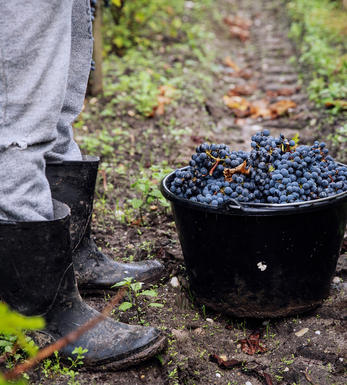
Champagne blend
Which grapes are included in the blend, and their proportion, is one of the key factors determining the style of most Champagnes. Three grapes are used - Pinot Noir, Chardonnay and Pinot Meunier.
26% of vineyards in Champagne are planted with Chardonnay and it performs best on the Côtes des Blancs and on the chalk slopes south of Epernay. It is relatively simple to grow, although it buds early and thus is susceptible to spring frosts. It produces lighter, fresher wines than those from Burgundy and gives finesse, fruit and elegance to the final blend. It is the sole grape in Blancs de Blancs, which are some of the richest long-lived Champagnes produced.
Pinot Noir accounts for nearly 40% of the plantings in Champagne and lies at the heart of most blends - it gives Champagne its body, structure, strength and grip. It is planted across Champagne and particularly so in the southern Aube district.
The final component is Pinot Meunier and this constitutes nearly 35% of the plantings. Its durability and resistance to spring frosts make the Marne Valley, a notorious frost pocket, its natural home. It ripens well in poor years and produces a soft, fruity style of wine that is ideal for blending with the more assertive flavours of Pinot Noir. Producers allege that Pinot Meunier lacks ageing potential, but this does not deter Krug from including around 15% of it in their final blends.


Buying options
Add to wishlist
Description
The 1996 Vintage is magnificent. A towering, explosive Champagne, the 1996 delivers the house’s signature breadth in a full-bodied, structured Champagne with enough pure density and acidity to age well for decades.
Warm, nutty and spiced overtones add nuance on the finish. The 1996 is just beginning to enter the early part of its mature stage, where it is sure to remain for several decades. Krug’s Vintage is one of the truly epic wines of the year.
Antonio Galloni, Vinous.com (October 2014)
wine at a glance
Delivery and quality guarantee